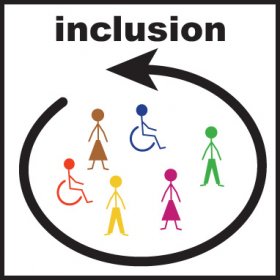After decades of changes in federal law and local policies, students with disabilities receive more mainstream school instruction than ever before.
A core principle of the federal law, Education for All Handicapped Children Act of 1975, states that students with disabilities should be educated in the least restrictive environment available. In all academic settings, including secondary schools, students should remain with the general population unless circumstances arise that keep from effective instruction.
Special Education in High School
According to a study by Christopher B. Swanson, director of the Education Research Center, nearly 2 million secondary school students receive services from federally-support special education programs. These students display a broad range of conditions and the severity of those conditions directly impact a student’s ability to learn in school. Historically, these students did not receive formal educational services, but now 97 percent of them attend regular secondary schools. In addition to classrooms with all other students, these students learn in individual or group pull-out sessions, in self-contained classrooms and resource rooms. Before a student is placed in any special education program, proper evaluations and placement procedures are followed.
Inclusion Basics
When a student with disabilities continues in the regular classroom, this is considered full inclusion. These students learn in the same manner as the other students and only receive limited arrangements from teachers. This is different from mainstreamed students, who still can receive substantial amounts of assistance outside the regular classroom. Mainstreamed students join the general student population on a limited basis while full inclusion students are nearly exclusively taught with the general population.
Success Rates
As more students with disabilities participate in regular classrooms, their success rates increase. According to Dr. Swanson, from 1996 to 2006, the percentage of students with disabilities who finished secondary school with a regular high school diploma increased from 43 percent to 56.5 percent. At the same time, the percent of students with disabilities who dropped out of school decreased from 45.9 percent to 29.2 percent.
Considerations
Providing students with disabilities full inclusion in the traditional classroom comes with a range of benefits, but it also places new stresses on the system, according to Dr. Andrea Ogonosky on the Association of Texas Professional Educators website. For example, Students with emotional issues present challenges such as poor social skills, aggression and tantrums. Emotional, behavioral and academic support are essential for both teachers and students to increase the success of full inclusion learning.

